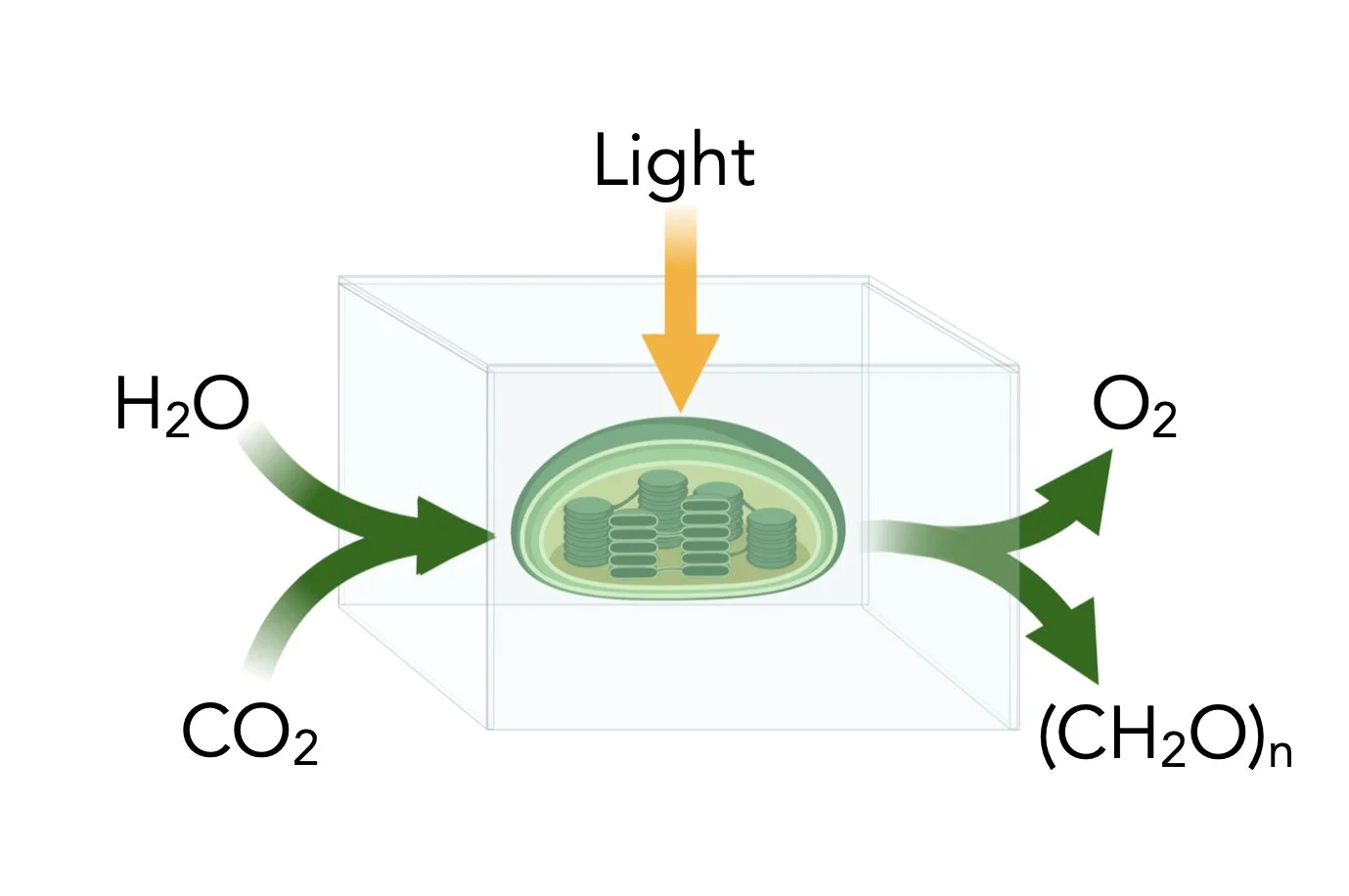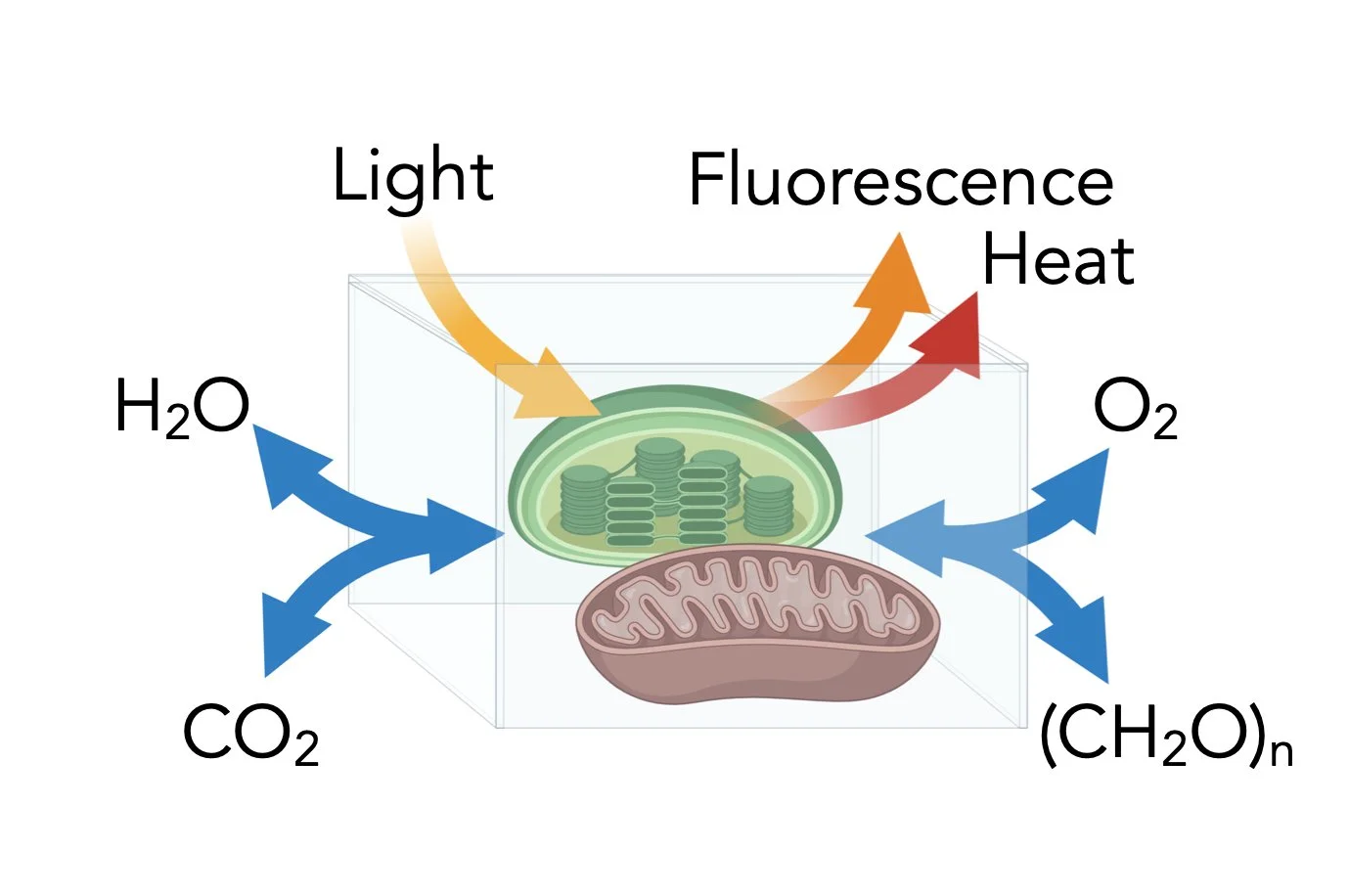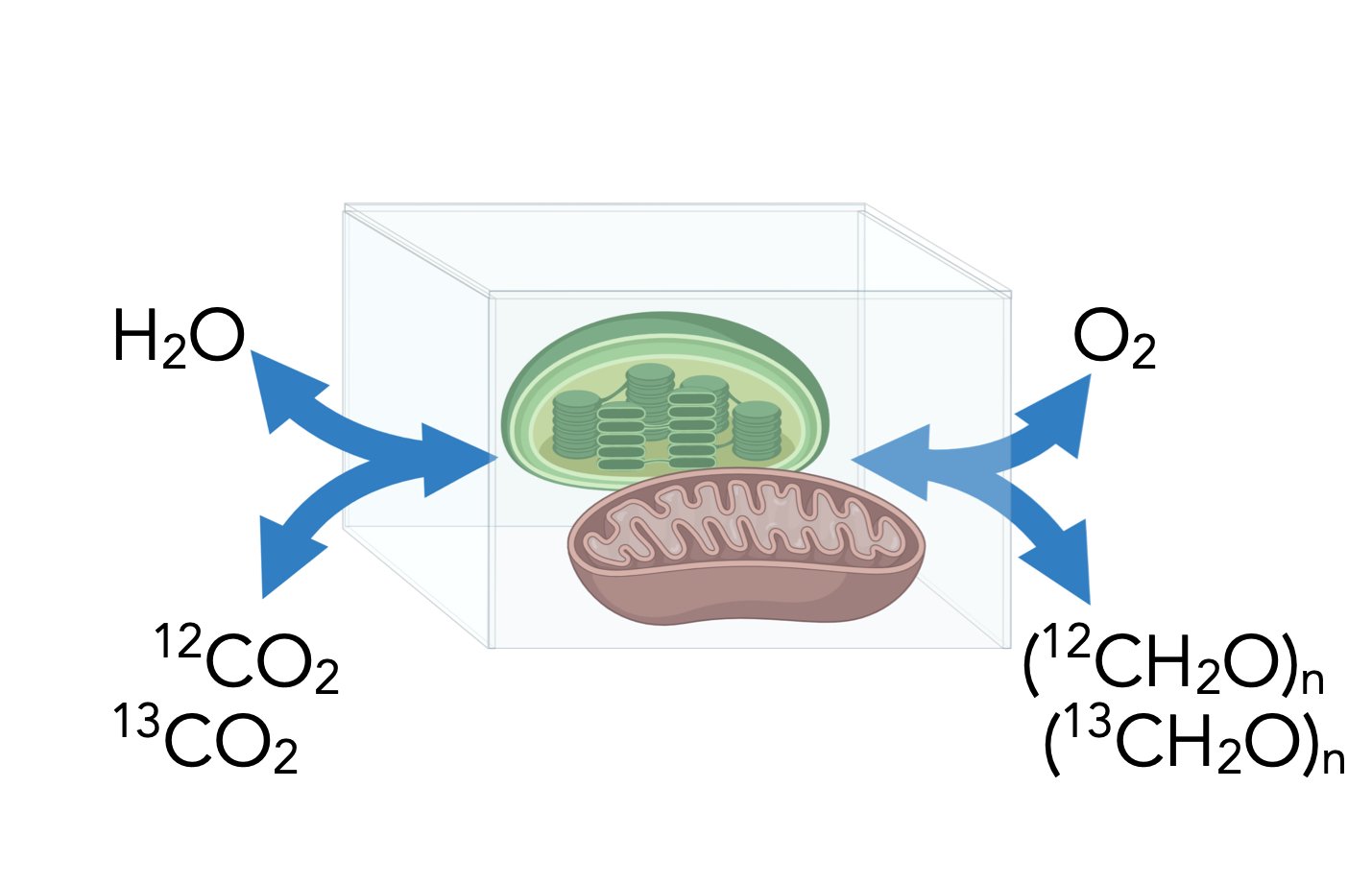Solution 1: Improved measurements of chlorophyll fluorescence
-
Chlorophyll is the primary pigment that photosynthetic organisms use to trap the energy in sunlight. Trapped light has one of three fates: it is either used to drive photosynthesis, dissipated as heat, or re-emitted as fluorescence.
-
Plant and algal physiologists have used fluorescence to study photosynthesis for more than a century, primarily in laboratory-based experiments with isolated pigments, chloroplast preparations, algal cultures, or single leaves.
-
In the last decade, advances in optical spectroscopy have made it possible to acquire active and passive measurements of chlorophyll fluorescence not just in the laboratory, but also from tower-, airborne-, ship- and space-based platforms.
-
This hierarchy of fluorescence-capable platforms has potential to revolutionize our ability to understand photosynthesis at large spatial scales. However, fluorescence is so ephemeral that other approaches are needed to advance understanding over long temporal scales.
Solution 2: Improved measurements of trace gases
-
A number of the physical, chemical, and biological processes involved in photosynthesis and respiration fractionate the isotopologues of the substrates and products, imparting isotope signatures that are both unique and persistent.
-
Stable and radioactive isotopes have been used to study photosynthesis and respiration since the 1950s, but the range of applications has been constrained by the size, stability, sensitivity, and expense of mass spectrometers.
-
In the last decade, advances in optical spectroscopy have also revolutionized our ability to measure the concentrations and isotope ratios of the trace gases that are linked to photosynthesis and respiration from laboratory-, tower-, airborne-, ship- and space-based platforms.
-
The hierarchy of platforms for trace gas observations has potential to advance understanding of photosynthesis and respiration over temporal scales that are far beyond the reach of fluorescence.
The pages on ECOLOGY, PHYSIOLOGY, and SPECTROSCOPY describe how my research takes advantage of both of these new measurement opportunities.
Figure credits: chloroplasts and mitochondria are thanks to the clever folks at Biorender.com





